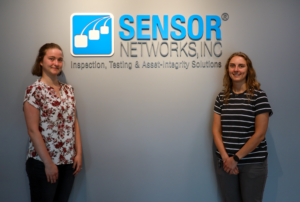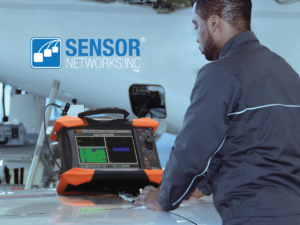International Women in Engineering Day (INWED) is an annual event that acknowledges and celebrates the invaluable contributions of women in the field of engineering. Every year, on June 23rd, individuals and organizations worldwide come together to honor the achievements of women engineers and inspire future generations.
Launched in 2014 by the Women’s Engineering Society (WES) in the United Kingdom, INWED was established with the purpose of raising awareness about the accomplishments of women in engineering. Its objectives include encouraging more girls and women to consider engineering as a career and promoting diversity and inclusion within the industry.
Over the years, INWED has evolved into a global event, celebrated in more than 100 countries worldwide. It has become a platform to showcase the remarkable work of women engineers, shining a light on their invaluable contributions to the industry while inspiring and motivating the next generation of women to pursue careers in engineering.
At Sensor Networks, Inc., we proudly join the global movement to celebrate INWED 2023 and highlight the remarkable accomplishments of women in engineering. To mark this occasion, we had the opportunity to speak with two exceptional women engineers from our office, Natalie Rhoades and Veronica Fitzhugh, to gain insights into their experiences and achievements in the field.
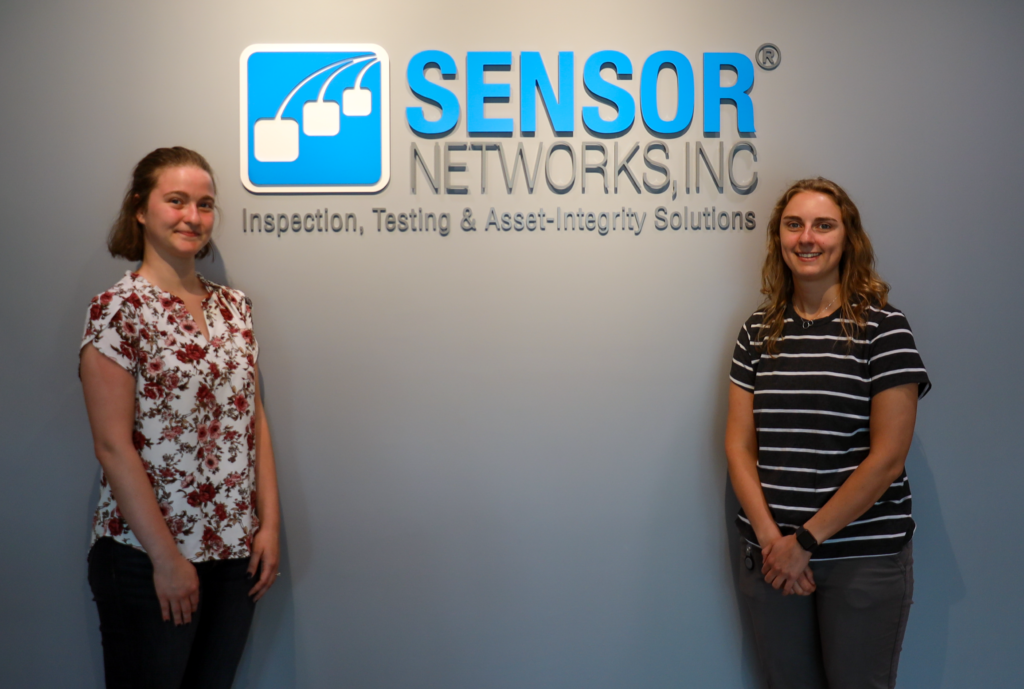
UT Applications Engineers Veronica (left) and Natalie (right)
Q: What made you want to pursue a career in engineering?
Natalie: Initially, I didn’t have a strong inclination toward pursuing engineering as my field of study, but my perspective changed when I entered college. Originally, I had set my sights on completing a two-year welding degree. However, as I progressed and excelled in my studies, I began to recognize the potential and promising prospects that awaited me if I pursued a four-year welding engineering degree.
Veronica: Setting aside that engineering, and engineering in NDT specifically, is intriguing, when I think of what inspired me to pursue a career in engineering I often think of my papa. In both my childhood and my adulthood, my papa can often be found tinkering with all kinds of motors, welding, or using his carpentry skills; He was always finding a solution for a problem. Sometimes for his kids, his family, or someone that just needed help, he is always willing to go that extra mile to help someone find a solution. He inspired me to pursue a career in engineering through his critical thinking and the many ways you can look at the world all while helping the people around you.
Q: What attracted you to the field of non-destructive testing (NDT) and how did you become involved in this area of engineering?
Natalie: During my college years, I had the opportunity to take a few NDT classes, and I found myself fascinated by the many possibilities that the NDT field has to offer. As I gained more knowledge, my curiosity continued to grow, driving me to further expand my understanding and explore the subject in greater depth.
Veronica: The continuous process of learning and the advancements in technology are what initially attracted me to the NDT field. My first exposure to NDT was during my vocational high school, where I learned about dye penetrant testing. I was struck by the simplicity and effectiveness of the process, which led me to wonder about other NDT techniques.
While pursuing my education at Pennsylvania College of Technology, I was introduced to three other NDT processes: magnetic particle testing, radiographic testing, and ultrasonic testing. I was particularly intrigued by the ability of ultrasonic testing to reveal hidden details beneath the surface of the test material.
An internship at Sensor Networks further fueled my passion. I gained hands-on experience with advanced ultrasonic techniques, including phased arrays, multi-element bolt transducers, high-temperature transducers and so many other transducers within the Aerospace, Metals & Mining, Oil & Gas, Power Generation, and Transportation industries. After graduation, I became a full-time UT Applications Engineer at SNI. The ever-advancing technology in the NDT industry motivates me to keep learning. Every day I learn something new and cannot wait to learn something new tomorrow.
Q: What are some of the most exciting projects you have worked on as an engineer? How have they impacted your professional growth?
Natalie: One of the most exciting projects I’ve had the privilege of being a part of was the development of the DHT-400 during my time at SNI. It stands out to me as a particularly memorable experience because it was not only my first completed project but also a tremendous learning opportunity. From the careful selection of materials to the meticulous execution of assembly and testing procedures, every step of the journey was filled with excitement and growth.
As I encountered various challenges along the way, I found myself growing as a problem solver and honing my ability to collaborate effectively with others. Looking back, I am very grateful for the chance to contribute to the development of the DHT-400, as it expanded my knowledge of the NDT field and taught me valuable lessons in teamwork and cooperation.
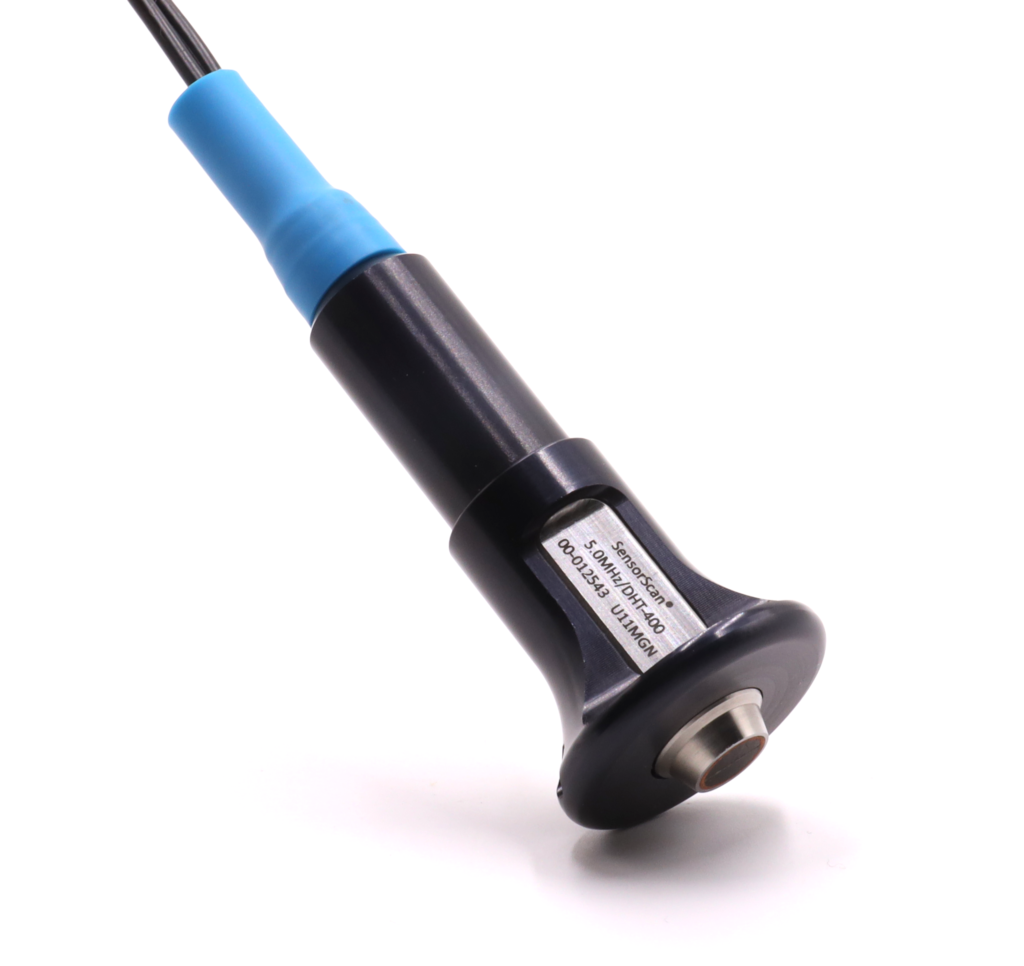
DHT-400: High-Temp Dual-Element Transducer
I have also had the opportunity to work with GE Aviation on various projects over the past few years, in addition to creating inspection kits for them. These experiences have further enriched my professional journey, allowing me to gain insights from industry leaders and deepen my understanding of NDT.
Working on a variety of projects at SNI has greatly contributed to my understanding of the NDT field. Through these experiences, I have gained a clearer understanding of the aspects of NDT that I find enjoyable and those that may not resonate with me as much. This has been helpful in shaping my career path and allowing me to focus on the areas within NDT that truly inspire and fulfill me.
Veronica: Some of the most exciting projects I have worked on as an engineer are designing custom application transducers. At SNI, we utilize Extende CIVA modeling software as one of the many tools for designing transducers. Recently, I underwent specialized UT training for CIVA, and have been actively applying my newfound knowledge to design transducers specifically for on-site nuclear bolt inspections. Some of these bolts have very little contact space for a transducer to transmit sound into the testing bolt. Finding the perfect transducer for such inspections can be quite challenging, but I do love the challenge.
These experiences have not only contributed to my professional growth but have also honed my critical thinking abilities and collaborative skills as I work closely with my fellow engineers to develop more advanced and user-friendly custom application transducers.
On International Women’s Day, do you have any message you would like to share to aspiring women in the field of NDT?
Natalie: Do what you want and do not let anyone tell you otherwise.
Veronica: To every problem, there is a solution – finding the solution depends on you and your resources.



